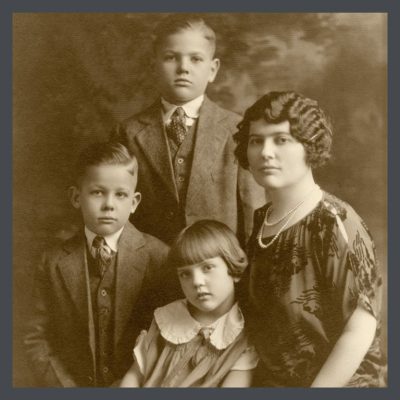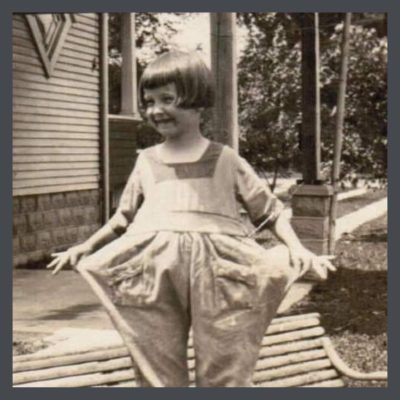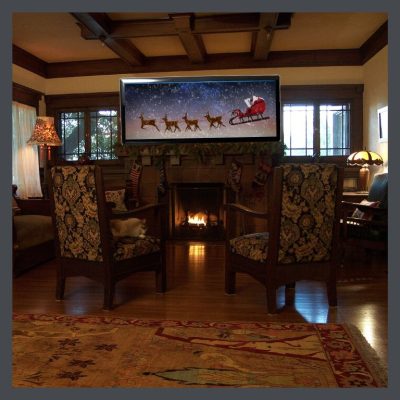BUNGALOW INTERIOR DESIGN MISTAKES
 WARNING! This post is only for those of you who want to create an authentic period interior & would like some tips on how to do so. It is not written with the purpose of changing anyone’s mind, tastes, or life decisions.
WARNING! This post is only for those of you who want to create an authentic period interior & would like some tips on how to do so. It is not written with the purpose of changing anyone’s mind, tastes, or life decisions.
In DESIGNING Part 1, I talk about my friend who turned her beautiful Arts & Crafts home into a nursery school. She was a wonderful mother with a house full of joyful toddlers who could play freely in their home. I admired her greatly & enjoyed watching her children learn how to move their bodies & interact with the material universe.
My series is written to give anyone a hand with designing anything, be it a home, a party, a special outfit. It is basic art theory that is applicable to anything & everything in life. Art theory is kind of like physics- it is merely an explanation of how we view the material world- lines, colors, shapes, sizes, etc., & how we can make them work together to please us.
It is paramount that your home pleases you. You need to feel that it expresses you & it must be a comforting haven. Me, I like a house that tells a story & I find that decorating with items that might have been chosen by its original owners to please me greatly. If that’s what you like, keep reading. If you would like to choose a different ambience, that’s fine too.
DESIGN IS IN MY BLOOD!
 My mother had very definite ideas about interior design. I’m guessing that many of these were learned from her mother who, after growing up on a West Virginia farm, strove to become a woman of culture, refinement & taste .
My mother had very definite ideas about interior design. I’m guessing that many of these were learned from her mother who, after growing up on a West Virginia farm, strove to become a woman of culture, refinement & taste .
After a life of milking the cows & slopping the pigs, she left her family at a young age to live in town so she could continue her schooling. Bright & eager, she carefully observed how things were done in her new environment. From the precise placement of silverware to the use correct of candlesticks (no unlit candles allowed!) she absorbed the rules of her new life & passed them onto my mother who taught them to her only daughter. Like my bad knees & an affinity for grammar, I come by my opinions on design honestly.
Here’s Grandma Gordie Elsie in 1922, in her cut silk velvet dress, hair styled in a perfectly Marcelled wave, her daughter, my dear mother, attired in the little silk pongee dress that I still keep in a box & cherish. My uncles, look like solemn, miniature men in their ties & 3-piece suits. The very height of 20’s family chic.
AVOIDING BUNGALOW INTERIOR DESIGN MISTAKES
My mother had her own irrepressible style sense from a very young age & passed this on to me. “Your home reflects you- your tastes, your aspirations, your experiences. You can be inspired by the work of others, but don’t try to be others. Be yourself!”
had her own irrepressible style sense from a very young age & passed this on to me. “Your home reflects you- your tastes, your aspirations, your experiences. You can be inspired by the work of others, but don’t try to be others. Be yourself!”
The constant lesson, “Be yourself.”
When she was in her 90’s, we spend hours wheeling around Stanford Hospital, Ma hooked up to oxygen & a heart monitor, together, marveling at their spectacular art collection. (After her release from the hospital, we amused ourselves by making scathing comments about the “art’ in the skilled nursing center. We were harsh critics!)
Viewed as a fashionista until the end. Her long nails were always bright red & she never left her apartment without makeup.
And she was always her warm, quirky, uncompromising, opinionated unique self.
MOM’S DESIGN RULES
1. Less is more- the idea that a restrained hand creates good design. A major Bungalow Don’t is excessive gewgaws. We are not Victorians!
My grandmother’s early life on the farm was delineated by the concept of less. A family tradition still used by my brother & me today is the Southern holiday greeting of, “Christmas gift!” On the farm, each child would receive one gift- a walnut, an orange, a homemade doll & be joyfully grateful.
 By the time my mother was born in 1919, the family was affluent, & my ever-observant grandmother, growing ever more cultured as she attended the theater, visited museums & hob-nobbed with the social elite of her town, had become aware of quality & of the simplicity in good design. A teacher by training & by inclination, she passed these lessons on to my mother. Who passed them on to me.
By the time my mother was born in 1919, the family was affluent, & my ever-observant grandmother, growing ever more cultured as she attended the theater, visited museums & hob-nobbed with the social elite of her town, had become aware of quality & of the simplicity in good design. A teacher by training & by inclination, she passed these lessons on to my mother. Who passed them on to me.
Re-enforcing these lessons of simplicity, I grew up in the desert of the Southwest with the aesthetics of the Hopi & the Navajo influencing my taste. The desert does not provide anything in abundance & its austere beauty still overwhelms & inspires me. The Craftsman aesthetic melds beautifully with Native American arts & crafts, both using Mother Nature’s gifts in an honest, unadorned manner.
2. Establish your focal point & use every other element to enhance it. Don’t confuse the eye by providing random elements on which to focus. Even with many things to look at, by careful placement, you can guide the eye in the direction you want it to go.
3. No eating in the living room. Oops, that one just slipped in.
4. Lighting is a key element. It directs attention, establishing hierarchies of importance, makes a room functional & establishes mood. Do not create areas of glare. Keep it soft other than where task lighting is required.
One of the most common bungalow interior design mistakes is using lighting fixtures in a modest bungalow that are more suitable in a bungamansion. These pieces will only overwhelm your house, detracting from the lovely features that are there. The Gamble house works because all the pieces enhance one another. The same principle applies in your bungalow.
5. Choose only pieces that you love & treasure. From furniture to textiles to art, better an empty space than the Bungalow Don’t of soulless fillers.
6. The TV does not belong in the living room. However, if you have a small house, you might have no other place for it to sit.
 Should this be the case, please do not place that TV above your fireplace. Your fireplace is a key design feature of your room, your whole house, actually. It is very likely clad in an beautiful ornamental tile & flanked by glass-doored cabinets. Perhaps there are windows with divided lites above these cabinets. These are standout period features & plopping your TV smack in the middle will- I’m going to be harsh here-it will waste them.
Should this be the case, please do not place that TV above your fireplace. Your fireplace is a key design feature of your room, your whole house, actually. It is very likely clad in an beautiful ornamental tile & flanked by glass-doored cabinets. Perhaps there are windows with divided lites above these cabinets. These are standout period features & plopping your TV smack in the middle will- I’m going to be harsh here-it will waste them.
I visited some friends in a beautiful Craftsman one Christmas & they had the TV hung over the fireplace blaring out a holiday themed program. I was stunned. The electronic images completely took over the living room & dining room, the Christmas tree & the holiday spirit which I so enjoy in an old house. (This is not that house. This is the Hare House with a Photoshopped Santa just so I could pass the trauma of one of my unfavorite bungalow interior design mistakes on to you. Sorry.)
7. Treasure the architectural features of your house. They are what give it its character & charm.
8. Examples of Extreme Bungalow Please Don’ts-
Painting, removing or otherwise harassing your stained woodwork. My DESIGNING series should help you figure out how to brighten your home without doing this.
Removing walls to change the flow of the house. Example: opening the kitchen to the dining room. The layout of your house is a character-defining feature.
Adding decorative/fake materials to make it fancier. Avoid the bungalow interior design mistakes of thinking that the original features of your dear house could be improved. Putting lipstick on your pig will be more effective.
Any changes you make to a house of any period should go in a backward direction, taking it back to its original design.
9. Make sure there are areas in which kids do not have to be careful. Bungalows are family homes & there must be room for the kids to play.
10. Don’t try to make your home so perfect looking that it feels like a hotel. I have a 100 year old Chinese cabinet that is way too large for my current house. I styled it & it hits the eye more pleasingly with the added bits & bobs, but truly, the proportion is still awful.
Too bad. I love that cabinet & if someday I end up in a tiny tiny, old lady space & have to sleep standing up in it, I’ll just learn how to snooze on my feet.
Yes, I know that one person’s bungalow interior design mistakes are another one’s beauty, but, please check out what our good buddy Gustav Stickley had to say about it in his magazine, The Craftsman, to understand my stance.
 STAY IN THE BUNGALOW KNOW!!!
STAY IN THE BUNGALOW KNOW!!!
Sign up for our newsletter & receive our FREE E-book, 7 VITAL Things to Do Before You Hire a Contractor.



0 Comments